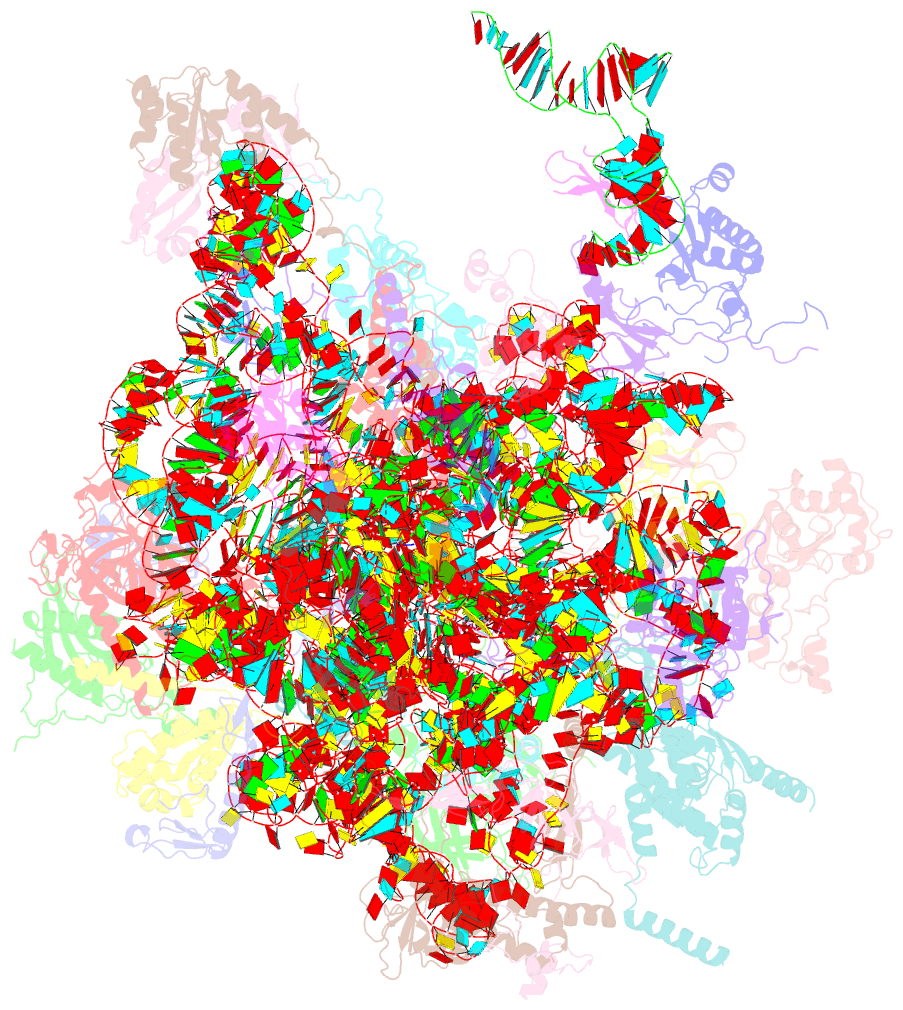Summary information and primary citation
- PDB-id
- 4v19; SNAP-derived features in text and JSON formats;
DNAproDB
- Class
- ribosome
- Method
- cryo-EM (3.4 Å)
- Summary
- Structure of the large subunit of the mammalian mitoribosome, part 1 of 2
- Reference
- Greber BJ, Boehringer D, Leibundgut M, Bieri P, Leitner A, Schmitz N, Aebersold R, Ban N (2014): "The Complete Structure of the Large Subunit of the Mammalian Mitochondrial Ribosome." Nature, 515, 283. doi: 10.1038/NATURE13895.
- Abstract
- Mitochondrial ribosomes (mitoribosomes) are extensively modified ribosomes of bacterial descent specialized for the synthesis and insertion of membrane proteins that are critical for energy conversion and ATP production inside mitochondria. Mammalian mitoribosomes, which comprise 39S and 28S subunits, have diverged markedly from the bacterial ribosomes from which they are derived, rendering them unique compared to bacterial, eukaryotic cytosolic and fungal mitochondrial ribosomes. We have previously determined at 4.9 Å resolution the architecture of the porcine (Sus scrofa) 39S subunit, which is highly homologous to the human mitoribosomal large subunit. Here we present the complete atomic structure of the porcine 39S large mitoribosomal subunit determined in the context of a stalled translating mitoribosome at 3.4 Å resolution by cryo-electron microscopy and chemical crosslinking/mass spectrometry. The structure reveals the locations and the detailed folds of 50 mitoribosomal proteins, shows the highly conserved mitoribosomal peptidyl transferase active site in complex with its substrate transfer RNAs, and defines the path of the nascent chain in mammalian mitoribosomes along their idiosyncratic exit tunnel. Furthermore, we present evidence that a mitochondrial tRNA has become an integral component of the central protuberance of the 39S subunit where it architecturally substitutes for the absence of the 5S ribosomal RNA, a ubiquitous component of all cytoplasmic ribosomes.





